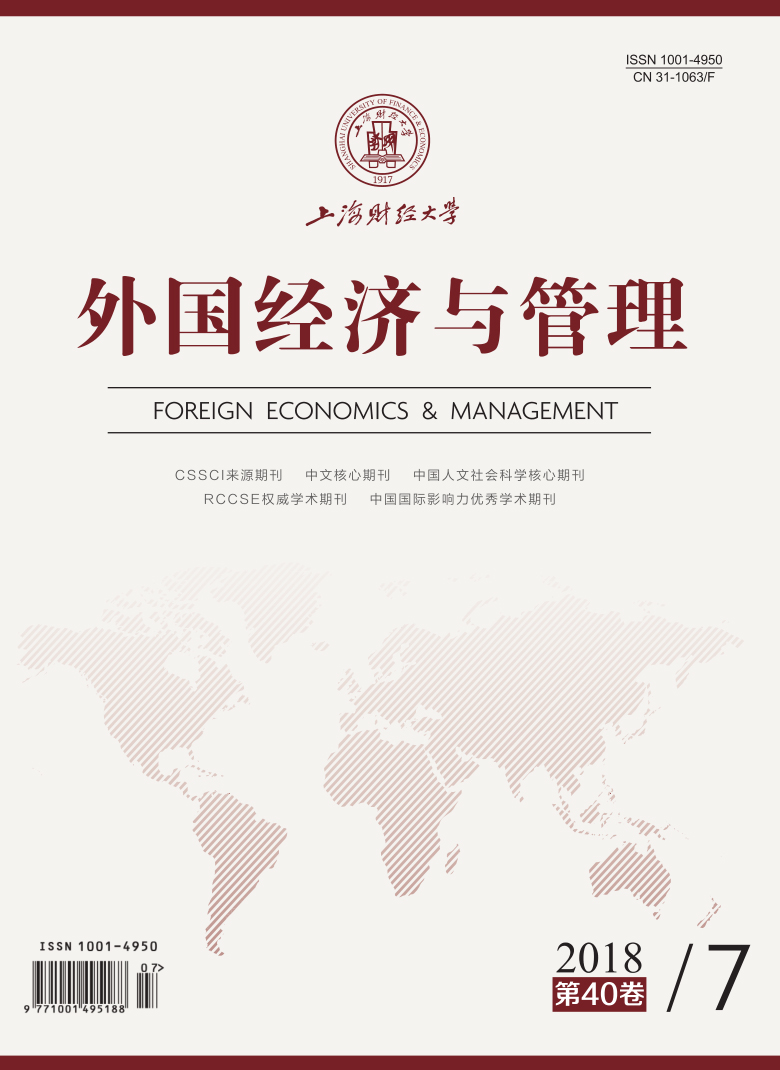跨国品牌的本土化实践中经常会出现文化混搭现象,了解消费者对文化混搭的反应及其内在心理机制,对于跨国品牌的本土化适应具有重要意义。然而,关于文化混搭现象的研究,近年来才受到学术界的重视,相关成果较少且缺乏一个系统的梳理,较难为跨国品牌的本土化实践提供全面的战略指引。本文对现有的文化混搭现象研究进行了回顾,系统梳理了文化混搭的表现形式与激活条件,整理并提炼了消费者对文化混搭现象的反应及其心理机制和边界条件,最后对现有研究进行了评析,并指出了未来研究的方向,以期为跨国品牌的本土化实践提供借鉴。
跨国品牌本土化适应中的文化混搭现象:研究回顾与展望
摘要
参考文献
1 冯文婷, 吴贤均, 彭泗清. 跨国公司" 亲华”广告的双边效果: 是皆大欢喜, 还是顾此失彼?[J]. 营销科学学报, 2011, (3): 8–24.
4 彭璐珞. 理解消费者对文化混搭的态度: 一个文化分域的视角[D]. 北京: 北京大学, 2013.
5 彭璐珞, 赵娜. 文化混搭的动理——混搭的反应方式、影响因素、心理后果及动态过程[A]. 杨宜音, 赵志裕, 吴莹. 中国社会心理学评论(第九辑)[C]. 北京: 社会科学文献出版社, 2015: 19–62.
8 郑晓莹, 彭泗清. 当洋人穿" 唐装”, 唐人穿" 洋装”——消费者对国内外品牌的不同广告诉求的反应[J]. 营销科学学报, 2012, (1): 1–19.
9 Benet-Martínez V, Leu J, Lee F, et al. Negotiating biculturalism: Cultural frame switching in biculturals with oppositional versus compatible cultural identities[J]. Journal of Cross-Cultural Psychology, 2002, 33(5): 492–516. DOI:10.1177/0022022102033005005
10 Briley D A, Aaker J L. When does culture matter? Effects of personal knowledge on the correction of culture-based judgments[J]. Journal of Marketing Research, 2006, 43(3): 395–408. DOI:10.1509/jmkr.43.3.395
11 Chen X, Leung A K Y, Yang D Y J, et al. Cultural threats in culturally mixed encounters hamper creative performance for individuals with lower openness to experience[J]. Journal of Cross-Cultural Psychology, 2016, 47(10): 1321–1334. DOI:10.1177/0022022116641513
12 Cheon B K, Christopoulos G I, Hong Y Y. Disgust associated with culture mixing: Why and who?[J]. Journal of Cross-Cultural Psychology, 2016, 47(10): 1268–1285. DOI:10.1177/0022022116667845
13 Chiu C Y, Mallorie L, Keh H T, et al. Perceptions of culture in multicultural space: Joint presentation of images from two cultures increases in-group attribution of culture-typical characteristics[J]. Journal of Cross-Cultural Psychology, 2009, 40(2): 282–300. DOI:10.1177/0022022108328912
14 Cui G, Yang X Y, Wang H Z, et al. Culturally incongruent messages in international advertising[J]. International Journal of Advertising, 2012, 31(2): 355–376. DOI:10.2501/IJA-31-2-355-376
15 Cui N, Xu L, Wang T, et al. How does framing strategy affect evaluation of culturally mixed products? The self-other asymmetry effect[J]. Journal of Cross-Cultural Psychology, 2016, 47(10): 1307–1320. DOI:10.1177/0022022116670513
16 De Keersmaecker J, Van Assche J, Roets A. Need for closure effects on affective and cognitive responses to culture fusion[J]. Journal of Cross-Cultural Psychology, 2016, 47(10): 1294–1306. DOI:10.1177/0022022116666375
17 Hao J, Li D M, Peng L L, et al. Advancing our understanding of culture mixing[J]. Journal of Cross-Cultural Psychology, 2016, 47(10): 1257–1267. DOI:10.1177/0022022116670514
18 Harush R, Lisak A, Erez M. Extending the global acculturation model to untangle the culture mixing puzzle[J]. Journal of Cross-Cultural Psychology, 2016, 47(10): 1395–1408. DOI:10.1177/0022022116670261
19 Keh H T, Torelli C J, Chiu C Y, et al. Integrative responses to culture mixing in brand name translations: The roles of product self-expressiveness and self-relevance of values among bicultural Chinese consumers[J]. Journal of Cross-Cultural Psychology, 2016, 47(10): 1345–1360. DOI:10.1177/0022022116667843
20 Kwan L Y Y, Li D M. The exception effect: How shopping experiences with local status brands shapes reactions to culture-mixed products[J]. Journal of Cross-Cultural Psychology, 2016, 47(10): 1373–1379. DOI:10.1177/0022022116670262
21 Li D M. Cultural politeness in international marketing[D]. Singapore: Nanyang Technological University, 2013.
22 McCrae R R, Costa P T Jr. Conceptions and correlates of openness to experience[A]. Hogan R, Johnson J A, Briggs S R. Handbook of personality psychology[C]. San Diego, CA, US: Academic Press, 1997: 825–847.
23 Mok A, Morris M W. Bicultural self-defense in consumer contexts: Self-protection motives are the basis for contrast versus assimilation to cultural cues[J]. Journal of Consumer Psychology, 2013, 23(2): 175–188. DOI:10.1016/j.jcps.2012.06.002
24 Morris M W, Mok A, Mor S. Cultural identity threat: The role of cultural identifications in moderating closure responses to foreign cultural inflow[J]. Journal of Social Issues, 2011, 67(4): 760–773. DOI:10.1111/j.1540-4560.2011.01726.x
25 Morris M W, Chiu C Y, Liu Z. Polycultural psychology[J]. Annual Review of Psychology, 2015, 66(1): 631–659. DOI:10.1146/annurev-psych-010814-015001
26 Peng L L, Xie T. Making similarity versus difference comparison affects perceptions after bicultural exposure and consumer reactions to culturally mixed products[J]. Journal of Cross-Cultural Psychology, 2016, 47(10): 1380–1394. DOI:10.1177/0022022116668409
27 Rozin P, Lowery L, Imada S, et al. The CAD triad hypothesis: A mapping between three moral emotions (contempt, anger, disgust) and three moral codes (dommunity, autonomy, divinity)[J]. Journal of Personality and Social Psychology, 1999, 76(4): 574–586. DOI:10.1037/0022-3514.76.4.574
28 Schwartz S H. Universals in the content and structure of values: Theoretical advances and empirical tests in 20 countries[J]. Advances in Experimental Social Psychology, 1992, 25: 1–65. DOI:10.1016/S0065-2601(08)60281-6
29 Shi Y Y, Shi J, Luo Y L L, et al. Understanding exclusionary reactions toward a foreign culture: The influence of intrusive cultural mixing on implicit intergroup bias[J]. Journal of Cross-Cultural Psychology, 2016, 47(10): 1335–1344. DOI:10.1177/0022022116667844
30 Steenkamp J B E, Geyskens I. How country characteristics affect the perceived value of web sites[J]. Journal of Marketing, 2006, 70(3): 136–150. DOI:10.1509/jmkg.70.3.136
31 Torelli C J, Chiu C Y, Tam K P, et al. Exclusionary reactions to foreign cultures: Effects of simultaneous exposure to cultures in globalized space[J]. Journal of Social Issues, 2011, 67(4): 716–742. DOI:10.1111/j.1540-4560.2011.01724.x
32 Torelli C J, Ahluwalia R. Extending culturally symbolic brands: A blessing or a curse?[J]. Journal of Consumer Research, 2012, 38(5): 933–947. DOI:10.1086/661081
33 Torelli C J, Özsomer A, Carvalho S W, et al. Brand concepts as representations of human values: Do cultural congruity and compatibility between values matter?[J]. Journal of Marketing, 2012, 76(4): 92–108. DOI:10.1509/jm.10.0400
35 Tong Y Y, Pun-Zee Hui P, Kwan L, et al. National feelings or rational dealings? The role of procedural priming on the perceptions of cross-border acquisitions[J]. Journal of Social Issues, 2011, 67(4): 743–759. DOI:10.1111/j.1540-4560.2011.01725.x
36 Yang D Y J, Chen X, Xu J, et al. Cultural symbolism and spatial separation: Some ways to deactivate exclusionary responses to culture mixing[J]. Journal of Cross-Cultural Psychology, 2016, 47(10): 1286–1293. DOI:10.1177/0022022116665169
37 Zhou L X, Poon P, Wang H Z. Consumers’ reactions to global versus local advertising appeals: A test of culturally incongruent images in China[J]. Journal of Business Research, 2015, 68(3): 561–568. DOI:10.1016/j.jbusres.2014.09.006
引用本文
熊莎莎, 汪涛, 赵鹏. 跨国品牌本土化适应中的文化混搭现象:研究回顾与展望[J]. 外国经济与管理, 2018, 40(7): 113-128.
导出参考文献,格式为:





 , 1, 2
, 1, 2 13506
13506  20985
20985

